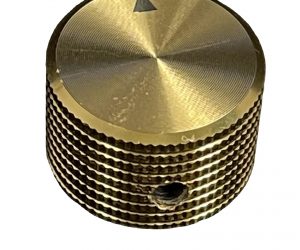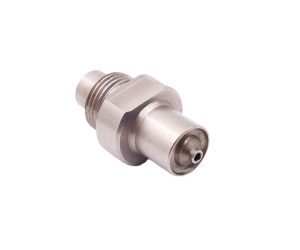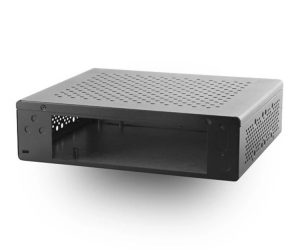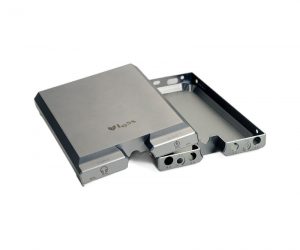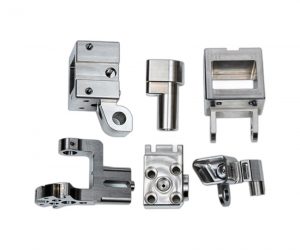Plastic gear sets have quickly become well-known in precision engineering in recent years, changing conventional manufacturing techniques and providing a number of benefits that make them essential in a wide range of sectors. Plastic gear sets are positioned as a game-changer, providing durability, versatility, cost-effectiveness, and customization thanks to advances in material science, creative manufacturing methods, and more environmentally friendly practices. This thorough overview examines the revolutionary potential of plastic gear sets, illuminating their advantages, important uses, design advancements, and potential future developments.
Introduction: The Rise of Plastic Gear Sets
Because of their durability and dependability, metal gear sets were the norm for many years. But thanks to the creation of sophisticated polymers and composite materials as well as innovative production methods like 3D printing and injection molding, engineers are now able to create plastic gears that are just as precise and perform as their metal counterparts. The emergence of plastic gears represents a revolution in precision engineering's design flexibility, cost-effectiveness, and sustainability—it's more than just a change in material.
1. The Advantages of Plastic Gear Sets
Plastic gear sets offer numerous advantages, making them ideal for a wide range of applications. These advantages extend beyond simple functionality, influencing everything from cost reduction to environmental sustainability. Here are some key benefits:
1.1 Lightweight Design
Plastic gears are considerably lighter than their metal counterparts, offering significant weight reduction. This is especially advantageous in industries like automotive and aerospace, where lighter components contribute to better fuel efficiency, enhanced performance, and lower emissions.
1.2 Silent Operation
Thanks to their inherent damping properties, plastic gears produce far less noise and vibration than metal gears. This makes them ideal for industries requiring quiet operation, such as consumer electronics, medical devices, and robotics, where minimizing noise improves the user experience and operational precision.
1.3 Corrosion Resistance
Plastic gear sets are naturally resistant to corrosion, unlike metal gears that are prone to rusting when exposed to moisture, chemicals, or harsh environments. This makes plastic gears perfect for marine applications, chemical industries, and food processing, where exposure to water or chemicals is common.
1.4 Cost-Effectiveness
Plastic gears are often more cost-effective than metal gears due to lower material costs and simpler manufacturing processes. Injection molding and 3D printing allow for faster production, which results in reduced overall manufacturing costs. For industries focused on reducing operational costs, plastic gears present an affordable alternative without sacrificing performance.
1.5 Design Flexibility
Plastic materials are easily molded into complex shapes, allowing engineers to design intricate geometries and customized tooth profiles. This design flexibility is crucial for creating gears that meet specific performance or space requirements. The ability to optimize gears for various factors like efficiency, noise reduction, and torque transmission makes plastic gears adaptable to a wide range of industries.
2. Unleashing the Potential: Applications of Plastic Gear Sets
The versatile properties of plastic gear sets have enabled them to find applications in diverse fields, transforming a wide array of industries. Some of the most significant sectors utilizing plastic gear sets include:
2.1 Automotive Industry
Plastic gear sets are particularly advantageous in the automotive sector. They contribute to weight reduction, which improves fuel efficiency and reduces emissions. Plastic gears are used in applications like powertrains, HVAC systems, and steering mechanisms. In electric vehicles (EVs), plastic gears reduce noise and improve the overall efficiency of the drivetrain.
2.2 Robotics and Automation
In robotics, precision control, and compact designs are critical. The lightweight and low-friction properties of plastic gears make them ideal for use in collaborative robots (cobots), where minimizing noise and maximizing agility is paramount. They also ensure low backlash and high torque transmission, allowing for smoother robotic movements in industries like manufacturing, healthcare, and logistics.
2.3 Consumer Electronics
Plastic gear sets have found widespread use in consumer electronics due to their small size, quiet operation, and durability. They are commonly found in cameras, printers, gaming consoles, and audio equipment, where low noise and compact design are essential.
2.4 Medical Devices
In the medical field, plastic gears play a critical role in ensuring the precision and reliability of devices such as imaging systems, diagnostic equipment, and surgical tools. Their lightweight nature and corrosion resistance make them ideal for sterilizable medical equipment that operates in high-precision environments.
3. Design Innovations: Pushing the Boundaries of Precision
Plastic gears have benefited greatly from design innovations that have expanded their functionality and precision, allowing them to compete with metal gears in even the most demanding applications.
3.1 Advanced Materials and Composites
The development of high-performance materials, such as carbon fiber-reinforced polymers and polyether ether ketone (PEEK), has enhanced the strength, stiffness, and wear resistance of plastic gear sets. These materials allow gears to withstand heavier loads and operate in high-temperature or harsh environments, expanding their application range.
3.2 High-Resolution 3D Printing
Additive manufacturing (3D printing) has revolutionized plastic gear production. With selective laser sintering (SLS) and stereolithography (SLA), manufacturers can create intricate internal structures and optimized tooth profiles that were previously impossible to achieve with traditional methods. 3D printing enables faster prototyping, reduces lead times, and allows for customized gear designs that cater to specific application needs.
3.3 Simulation and Optimization Tools
The use of computer-aided design (CAD) and finite element analysis (FEA) simulations has become essential for designing high-performance plastic gears. These tools help engineers simulate gear behavior under various operating conditions, predict stress distribution, and optimize gear geometry to ensure maximum efficiency and durability.
4. Durability and Cost-Effectiveness: A Winning Combination
Plastic gears offer remarkable durability and cost-effectiveness, making them an ideal solution for a variety of industries seeking to optimize their mechanical systems.
4.1 Wear Resistance and Longevity
Although plastic gears are often perceived as less durable than metal gears, advancements in material science and design have allowed plastic gears to exhibit exceptional wear resistance and longevity. Certain polymers, such as self-lubricating plastics, require little to no lubrication, reducing maintenance needs and enhancing the gears' service life.
4.2 Reduced Maintenance and Operating Costs
The reduced friction and energy efficiency of plastic gears translate into lower operating costs. These gears often require minimal maintenance due to their corrosion resistance and self-lubricating properties. Their lightweight nature also makes replacement easier, lowering both material and labor costs. Additionally, the simplicity of manufacturing plastic gears allows for cost savings in both production and long-term maintenance.
5. Future Prospects: Emerging Trends and Opportunities
The future of plastic gear sets is poised to be shaped by several emerging trends that will expand their applications and capabilities even further.
5.1 Integration with IoT
As the Internet of Things (IoT) continues to grow, plastic gear sets are set to play an essential role in the smart devices that drive this ecosystem. By incorporating sensors and connectivity into plastic gears, real-time monitoring of gear performance, predictive maintenance, and system optimization become possible, reducing downtime and enhancing efficiency.
5.2 Sustainable Manufacturing Practices
Sustainability is a growing focus in the manufacturing sector, and plastic gears are poised to contribute. The development of eco-friendly materials, such as biodegradable polymers or recycled composites, allows plastic gear sets to reduce their environmental impact. Their lightweight design also contributes to energy savings during operation, making them an attractive choice for industries looking to meet sustainability goals.
5.3 Customization and Personalization
As consumer demand for personalized products rises, the customization capabilities of plastic gears—especially through 3D printing—will play a crucial role. Engineers can design gears tailored to specific performance needs, whether it's reducing noise, improving efficiency, or optimizing for space constraints. This level of customization provides significant value to manufacturers seeking innovative solutions for complex challenges.
Conclusion: Embracing the Plastic Gear Set Revolution
Plastic gear sets have proven themselves as a versatile, cost-effective, and durable solution for modern precision engineering challenges. With their exceptional performance characteristics, including lightweight design, low noise and vibration, corrosion resistance, and cost-efficiency, plastic gears are set to revolutionize industries ranging from automotive to medical devices.
The future of plastic gear sets looks incredibly promising. As technologies evolve, their integration with IoT, focus on sustainability, and customization capabilities will only expand, opening up new possibilities for engineers and manufacturers. By embracing these advancements, industries can optimize their mechanical systems, reduce costs, and lead the way in innovative, sustainable engineering.
With expertise, trust, and a forward-thinking approach, plastic gear sets are not just shaping the future of precision engineering—they are redefining it.
